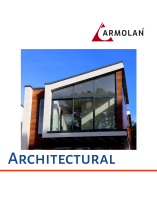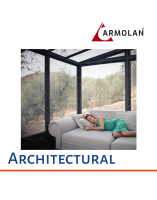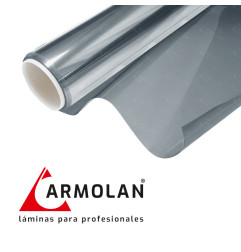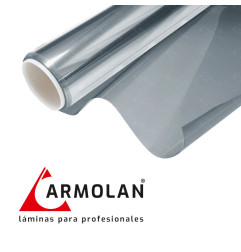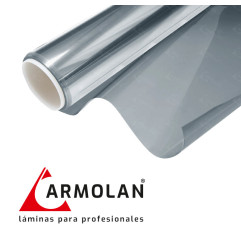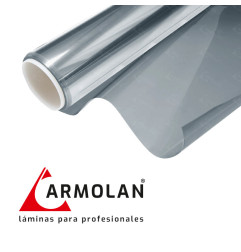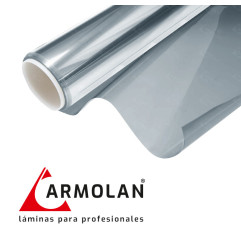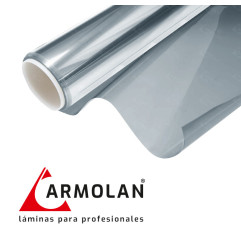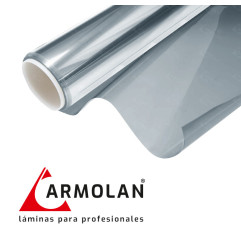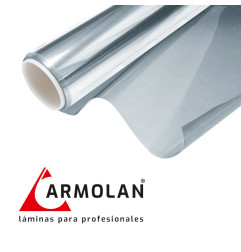Architectural Film
Architectural Films
Architectural film - regulate the sunlight with window film according to your wishes!
Glass as a building material has become an integral part of modern life. Today's glass building facades allow us to create open and light-flooded rooms. It doesn't matter whether it's offices, surgeries, the entrance area of a hotel or catering establishment, large company buildings or a private living area.
While the flat or house used to be a place of retreat with little opening to the outside, today it cannot be open enough. As has always been the case with our neighbours in the Netherlands, it no longer bothers us if our neighbours or passers-by can take an interested look into our living rooms.
Natural daylight indoors is not only important for our plants, it also ensures our personal well-being. Whereas glass surfaces used to be the weak point in a building in terms of energy efficiency, glass as a building material can now be used almost at will. However, the high insulating effect of gas-filled triple glazing also requires effective shading, as the interior would otherwise overheat due to the solar heat input. Making the heat generated by solar heat bearable simply by operating air conditioning systems is not a sensible and sustainable solution in today's climate change. However, energy savings achieved with optimised building wrapping are.
Architectural film as protection against excessive solar radiation
Although these passive solar heat gains are a welcome and desirable effect during the cold season, they help to reduce energy costs for heating. However, without regulation, these benefits would disappear again in summer due to increased costs for operating an air conditioning system.
It is not only the light that is visible to us that enters interior rooms through solar radiation. The part that is invisible to our eyes - the infrared and ultraviolet part of the sun's rays - can and must be regulated through the targeted use of a sun shading system.
Conventional sun shading systems such as blinds, roller blinds or louvre blinds indoors, external blinds, roller shutters or window shutters outdoors offer protection against the heat, but they all have one common disadvantage - in order to be effective, they reduce the view from inside and block the view.
Architectural film against heat loss in winter
Even though solar control films are primarily installed to protect against solar radiation, they can also be used as an energy-saving film in winter, albeit to a lesser extent. There are now also special energy-saving films that have been developed for precisely this purpose of heat insulation. Mounted on the inside of the glass pane, the film reflects the heat radiation back out of the room and makes it cool down less.
In winter, when it is freezing cold, we immediately find the heat radiation from the sun very pleasant. You feel the same effect with a window covered with solar control film, which reflects the heat radiation from the heating into the room. The surface temperature of the film-coated window pane rises, making it more cosy. While an uncoated glass pane simply remains cold, its radiant cold is perceived as very uncomfortable.
Transparent building film as UV protection
The use of building film allows targeted regulation without restricting the view. The unwanted part of the sun's rays, the IR and UV range, have no influence on the transparency of a pane and are either reflected or absorbed by a good film.
The harmful portion, such as UV radiation, causes furniture and textiles to fade. The application of a UV protection film helps to delay the all too rapid yellowing and fading of your interior caused by the sun and ensures long-term value retention. You can also sit in the sun undisturbed without getting too warm.
By installing a transparent sun protection film or a shatter protection film, it is possible to let only the visible part of the light into the interior without changing the view. The appearance of a building is also not altered by the use of this type of film, as it is visually imperceptible or barely noticeable. It is therefore particularly suitable for application to shop windows or listed buildings.
Mirrored building film as heat protection
The most effective sun protection is achieved by using reflective building films, also known as mirror films in silver, bronze or copper. In addition to IR (heat protection) and UV radiation (UV protection), these also reflect visible light (privacy protection / glare protection). Depending on the degree of tinting of the film, the greatest possible sun protection is achieved here - but without restricting the view of the panes from the inside, as this is always maintained.
Saving energy through the use of building films
Heat protection with solar control films a "passive" air conditioning system without operating costs and without "background noise" - reduce the heat input from solar radiation directly, effectively and cost-effectively.
Security with building film as burglary protection
Now you can go one step further and combine solar control films applied from the outside with security films installed on the inside. This installation provides you with an all-round professional and effective solution for various influences and dangers, which also contributes significantly to energy savings and offers additional shatter protection.
The use of a building film is not only suitable for retrofitting in existing buildings, but also offers optimum solutions for equipping standard glazing with desired additional properties that also help to save energy in new build projects. A not insignificant advantage of window film over conventional solar shading systems is the comparatively favourable installation and material costs. In addition, no structural changes to existing buildings are required to install the glass films.
Screening to protect privacy - but not only
Window films vary according to the degree of tinting and the different combinations of properties. Indoors, for example, they can also be used as decorative film, as privacy protection film or as anti-burglary film. The films can also be used in a variety of ways in commercial environments, for example as a privacy film in bank buildings or hospitals to maintain discretion and protect against prying eyes. Decorative films or privacy films can also be used to apply lettering such as your company logo with additional information such as opening times, telephone numbers, in the glazing in shop windows or entrance areas, but also in the interior of your company, or simply to advertise products - always in sight, always present.
Building films also for glass roofs and skylights
Films are also a suitable means of providing shade for glass roofs or skylights. Large glass roofs in office and administration buildings, swimming pools and gymnasiums in particular can be retrofitted effectively and cost-effectively. The polycarbonate double-skin sheets for skylights or skylight domes, which are often used in the commercial sector, can also be fitted with a suitable solar control film. This film must be equipped with a special adhesive that can withstand the expansion of the plastic under the influence of heat as well as the subsequent shrinkage during subsequent cooling.
As you can see, our building films certainly offer you a high utility value that will pay for itself over many years. The targeted use of window films protects you from heat and sun, UV protection films prevent decolouration of surfaces and tinted windows provide optimum glare protection at the workplace. Our safety films allow you to sleep more soundly and prevent worse in the event of glass breakage. Pure films for privacy protection also have additional functions.
Do you have any further questions about our building films or useful window tinting on one of your windows? If you would like more information about the function of UV protection films, simply write to us and we will be happy to advise you further on our films
With a premium Architectural film from Armolan, you always make the right choice and are fully protected with the best visibility!

